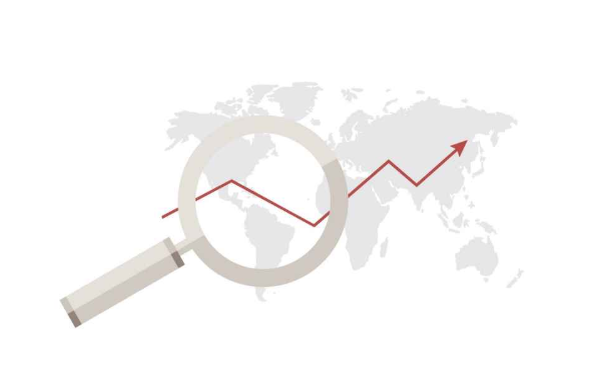Morgan Stanley mener, at der kan blive et “bull market” i år, i hvert fald i en del af markedet, men der vil også være megen usikkerhed og dermed volatilitet. Derfor skal investorerne passe på. Banken sammenligner med 2010, dvs. andet-året efter finanskrisen. Der var der også store kursstigninger. Det samme kan ske i 2021 trods store kursstigninger sidste år efter dykket i marts. Der kan især ventes stigninger på forbugerrelaterede aktier, som havde det svært sidste år. De – og valueaktier med en stærk balance – kommer igen. Der bliver en bredere vifte af aktier, der får kursstigmninger i år end sidste år, mener Morgan Stanley. Prisen på aktier er meget høj, og det udgør en risiko, men prisen er dog rimelig i forhold til den lave rente.
Bull Market, But Buckle Up
In what may become the second year of a bull market, where can investors look for returns, amid the appearance of historically high valuations?
Stock market returns in 2020 eerily resembled the trend in 2009—that is, the strength of the first year emerging from a deep stock market recession. While past performance does not necessarily predict future results, being an active equity investor does require understanding historical moves.
Last year, as the market recovered from its drop in March, many investors were way too bearish in retrospect, keeping too much cash on the sidelines. Once the rally began, volatility dropped, and the bull market climbed significantly before the bears eventually capitulated late in the year.
The second year of a new bull market historically performs quite well overall, though it tends to be more gut-wrenching along the way.
Now in 2021, amid hope and excitement that the pandemic might soon be behind us as vaccines are distributed, investors may actually find it tougher to generate the kind of stock market returns we saw last year in the midst of COVID-19.
Strange I know, but as we saw last year, equity returns need not align with what is the current state of the economy. Instead, stocks this year may resemble their performance in 2010, i.e., year two of the bull market that started in 2009.
After the S&P 500 Index’s stunning 68% return from the March 2020 low to the end of the year, stocks likely need to take a breather, much as they did in the second quarter of 2010. Importantly, however, overall returns of a second year of a bull market are historically positive, like in 2010.
We should therefore brace ourselves for a lot more stock market volatility in 2021. This will likely shake out the reluctant bulls, those who only recently put their cash to work in equities, at the exact wrong time. Based on history, investors should hold tight and keep eyes on the longer term. The second year of a new bull market historically performs quite well overall, though it tends to be more gut-wrenching along the way.
Is the Market Expensive?
On the surface, following the strong returns of 2020, stocks may appear expensive, deterring investors. The S&P 500’s current price-to-earnings ratio (its market value per share divided by its earnings per share) is high relative to its historical value.
Over the past 44 years, such a high price multiple has never been sustained, apart from the tech bubble of the 1990s. However, comparing the earnings yield to the US 10-year Treasury shows that the market is actually on the cheaper side of the equation.1
Looking further, the 50 fastest growing U.S. companies are behaving similarly to those that drove the tech bubble to its peak in 2000, with valuations as stretched as they were back then.2 However, if you broaden the set to include the 100 fastest growing U.S. companies, valuations are not so extreme; in fact, they came down as a group late last year, thus providing potential opportunity for investors.
Compelling Values
Companies that were impacted the most by the effects of the pandemic-induced recession, whose valuations are at lows relative to their history, i.e. value stocks3—for example, banks, movie theaters and cruise lines—may present a compelling opportunity particularly in an economy where the consumer is strong.
Historically, the best time to own value stocks has been when the economy is exiting a recession. As a group, these value stocks began their recovery in 2020, but as we begin 2021, these stocks are still cheaper relative to their historical levels.4 In our current economic recovery, we see opportunity in value stocks, focusing on those companies with strong balance sheets.
Outside of the U.S., we’re particularly focused on Asia ex-Japan technology stocks. This group historically benefits from U.S. dollar depreciation, and technology stocks in this part of the world are trading at significantly lower valuations than their U.S. peers.
In sum, we see both compelling opportunities in the stock market and the potential for a solid year of returns, as would be consistent with the second year of a bull market in equities, but we do expect significantly more volatility along the way.
Potential market headwinds include the possibility of the Federal Reserve beginning to adjust its timeline for ultra-accommodative policy; the bar for companies beating earnings estimates becoming less easy; geopolitical headlines; and cash that entered the market in late 2020 easily shaking loose in 2021.
My conclusion for 2021? It could be an overall good year for equities, but buckle up. That would be consistent with the second year of a bull market.



